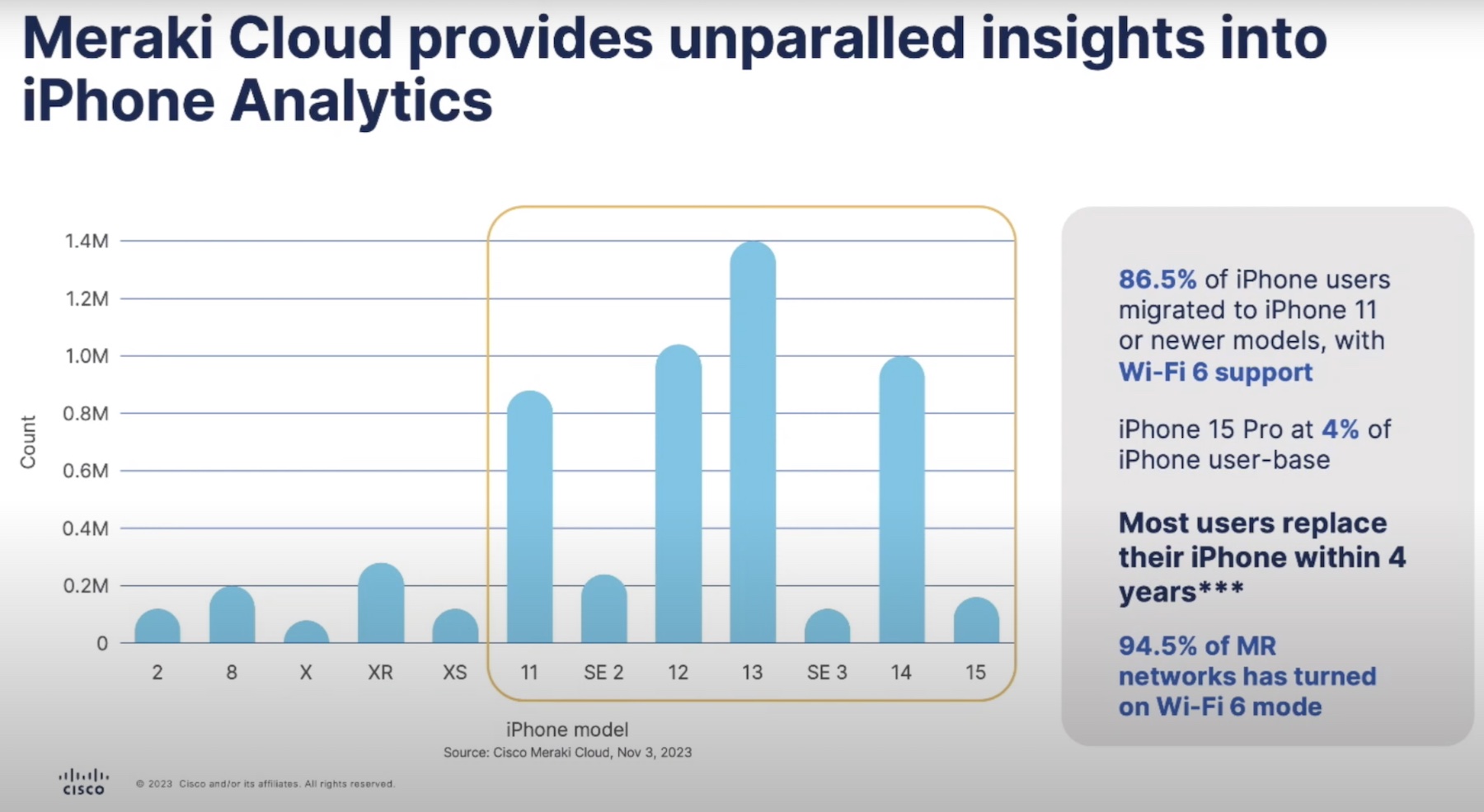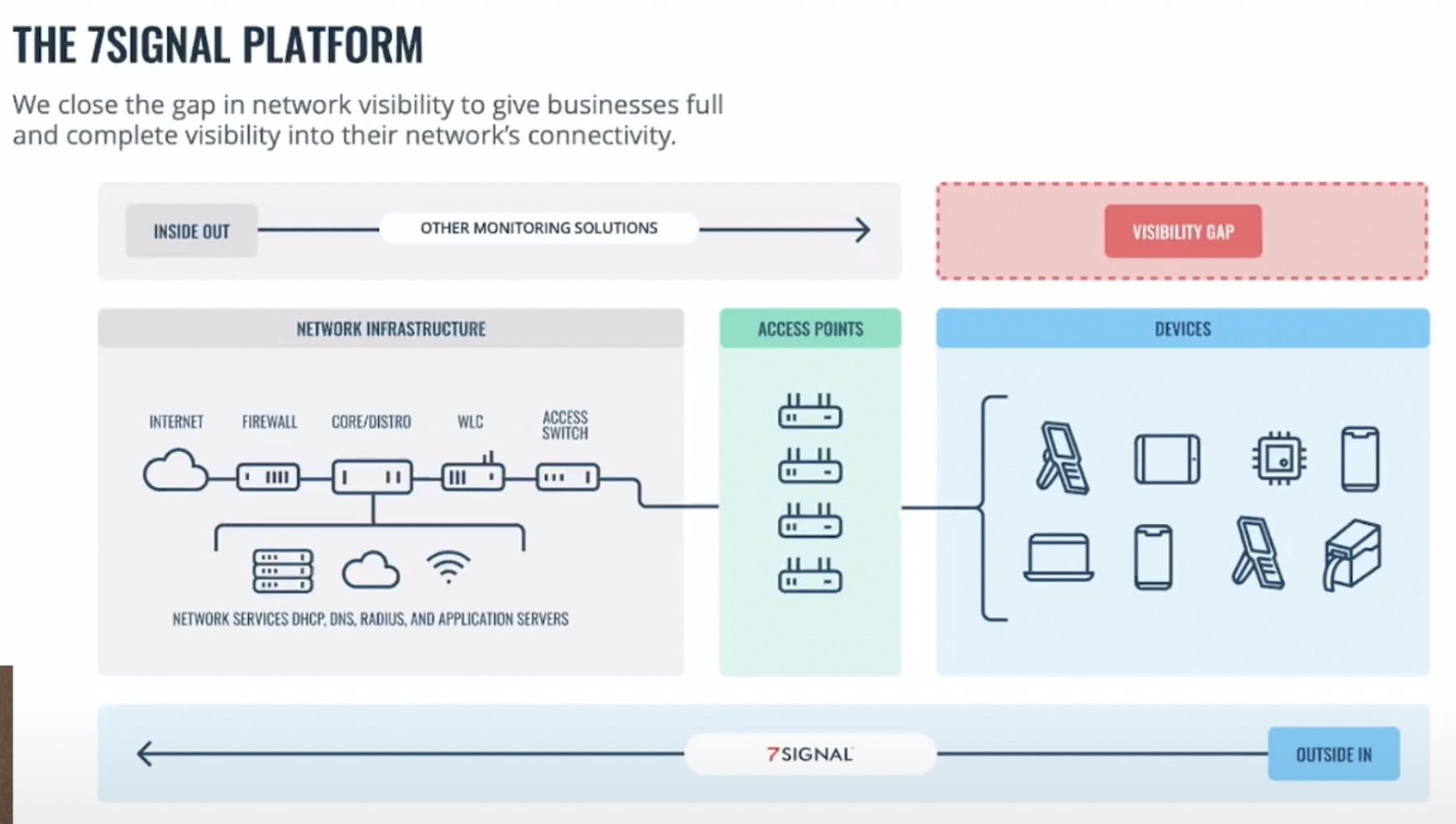Around the world, 22 billion Wi-Fi devices were manufactured in 2022. This means that in a world of 8 billion people, the distribution density is roughly 3 devices per user across the lifecycle.
“How many devices do you use today?” asked Minse Kim, Engineering Product Manager for Wireless Experience at Cisco, to the audience at the recent Mobility Field Day event in Silicon Valley.
Wi-Fi Networks Are Getting Harder to Manage at the Enterprise-Level
If you have ever struggled with Wi-Fi issues at work, you know how disruptive it can be. This is a problem as we increasingly use more devices in office and campus networks.
AI Ops is often the method of choice for monitoring and troubleshooting Wi-Fi issues in enterprises, but the missing piece of the pie is user experience. “The goal has to be better, faster and secure Wi-Fi for the end users,” emphasized Kim.
As devices pile on and the user-to-device ratio becomes more unbalanced, Wi-Fi monitoring and optimization has become the most challenging part of operating a network. After years of work, it is now believed that the bulk of the problems stems from not having enough information about the client environment.
“We asked multiple customers when they have to deal with Wi-Fi monitoring, troubleshooting or optimization, what percentage of the problem indeed was rooted in the client?”
Research found than on an average, 75% of Wi-Fi problems are caused by clients. Low visibility of the client environment exacerbates this, resulting in frequent service drops, operational inefficiencies and inconsistent and poor decision-making.
One of the traditional ways of getting data out of the client environment is snooping, but what’s seen on the clients’ device isn’t 100% accurate. There is always a small margin of error between what the AP sees and what the client experiences, and that gap makes way for misunderstandings and ineffective decisions.
Even after two decades of using the Wi-Fi technology, enterprises still rely on site surveys to get real-time data out of client environments and get a true measure of the performance and speed.
Taking Readings the Right Way
“The Wi-Fi industry grew up too much too fast. The infrastructure vendors can’t keep up with the diversity of client. So we decided to go back to basic and have all the key players in the industry who have the biggest market share and customer footprint, and set up a new way of understanding each other and exchanging their own information,” said Kim.
To get around the challenges emerging from a lack of understanding of the client experience, Cisco leans into the cloud data lake. There are 300 million devices in the Meraki Cloud that send back rich analytics about connectivity and devices in remote environments.
For deep vendor device analytics Cisco has developed an open ecosystem with partners like Samsung, Intel and Apple. Through this partnership, Cisco gets exclusive access to extended device information from off-the-shelf device software. The program is completely agentless. Information like product family and IDs, OS versions, AP neighbors, that companies formerly struggled to get their hands on can be easily retrieved through this.
“The first thing that we got was device profile and now we know who they are, identify their types of client inventory, what type of device is being used by customers, and so on,” said Kim.
Client Assurance Begins with Knowing the Client
“Knowing the clients’ perspective is the starting point of client assurance,” said Kim. Being part of the ecosystem has opened new ways to improve client Wi-Fi connectivity. For example, now deep analytics about the client network behavior, device type, OS versions, failures, etc. can be at the fingertips of operators. Knowing these help them make pinpointed and effective recommendations on short notice.

An example Kim cited is Cisco’s fast roaming protocol, 802.11r. 11r was standardized over a decade ago, but adoption is still at 1.45% with a majority of the users in retail, manufacturing and professional services only.
“People are still very much worried what will happen or what will possibly break if they change the default option. No vendor has the gut to turn on 11r as a default option. It has now become an optional consideration which leaves the burden to admin,” noted Kim.
Creating a model out of the statistical analysis of the data can help suggest the type of readiness one has to turn on such a feature or to tell what percentage of performance gains can be made by turning it on, said Kim.
“This prediction and recommendation is truly the last stage of network automation. Customer experience can be easily improved to 2 to 3 times.”
The insights derived from the data can determine client readiness, generate hardware and software configurations, and make recommendations for better network experiences. “Like every other network, we need to know both sides. We can’t really understand or troubleshoot the network without completely blindsiding the client.”
Wrapping Up
Inadequate visibility of the client Wi-Fi environment is the key reason for service drops and bad connectivity today. Cisco’s strategic partnership with device vendors not only brings data that was off-limits before within the reach of organizations, but also resets the way monitoring and troubleshooting are done, making the process more accurate and fully efficient.
For more information, be sure to check out Cisco’s presentations from the recent Mobility Field Day event.




